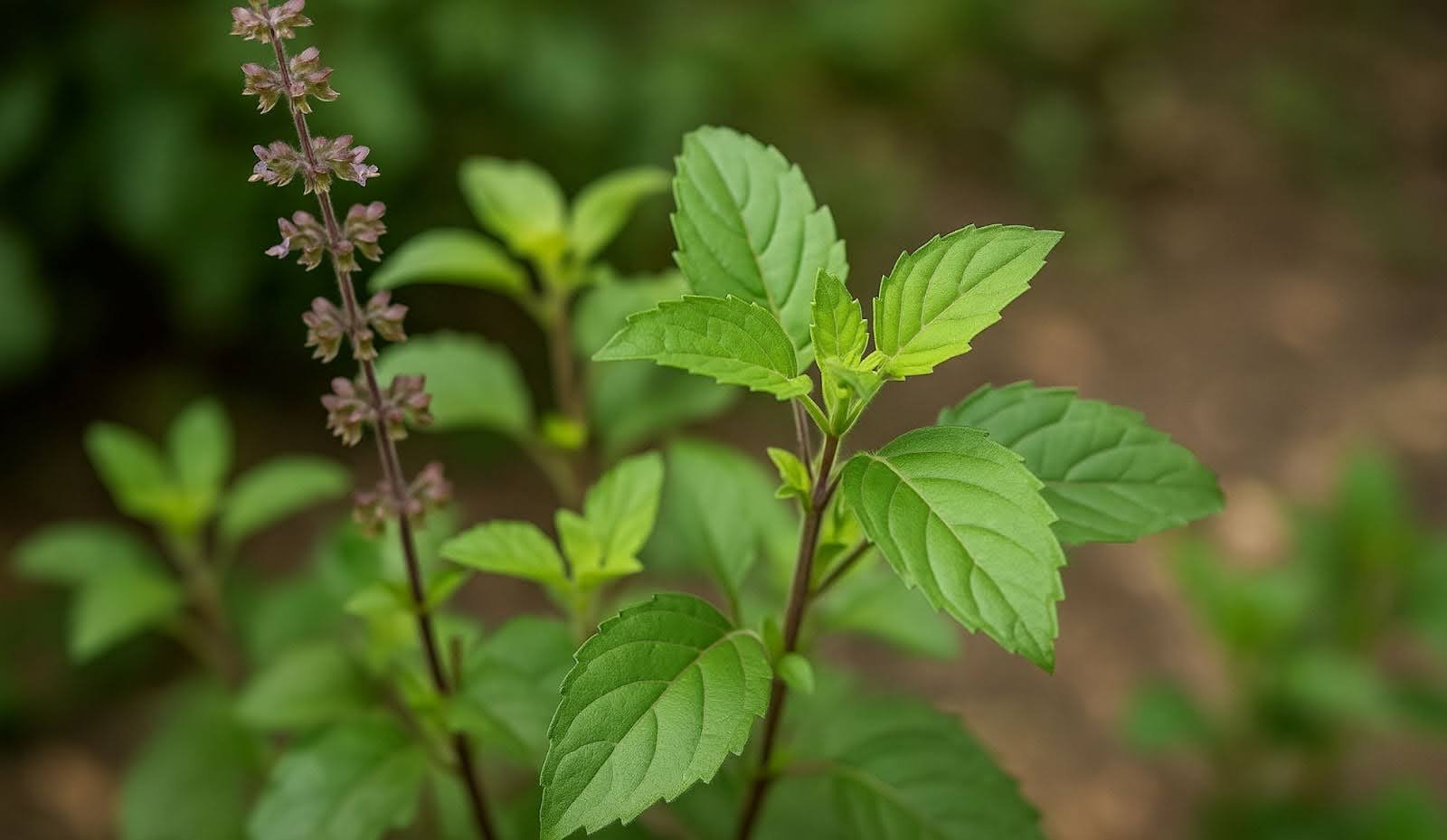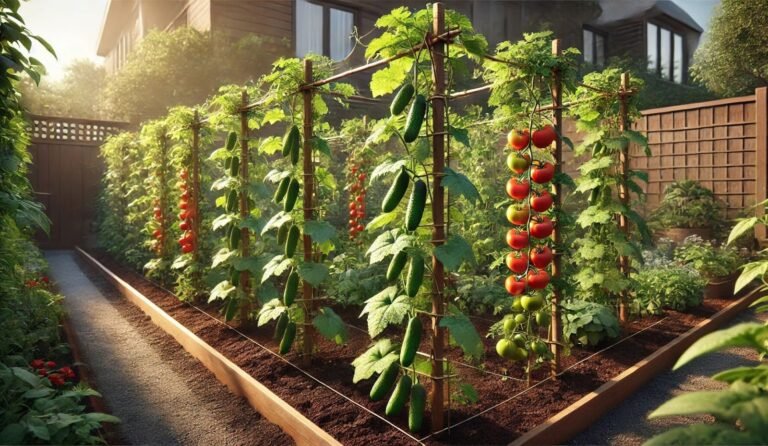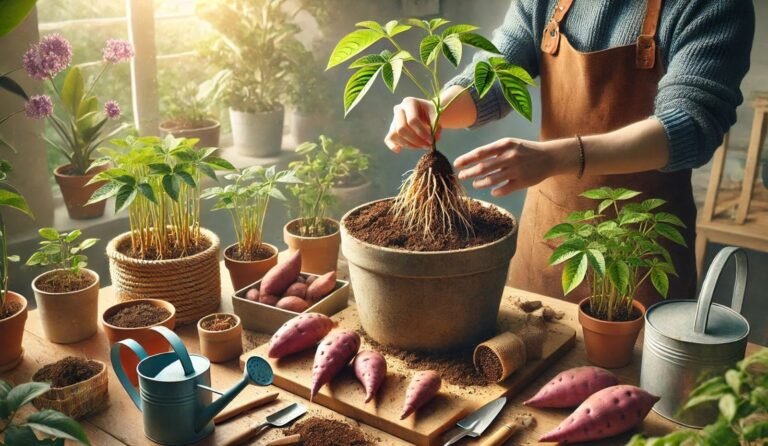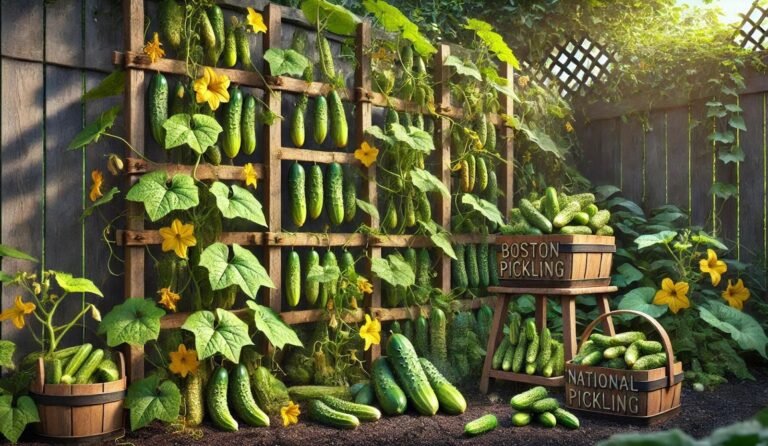Holy Basil Plant Care: Simple Tips for Thriving Tulsi
The holy basil plant is a total game-changer if you’re looking to add something special to your home or garden. More than just another herb, tulsi is packed with history, healing power, and a spicy, fresh scent that wakes up your senses. People have been growing and worshipping this sacred plant for thousands of years—and for good reason.
It’s known to boost immunity, reduce stress, and even bring a little extra positive energy into your space. Thinking about planting one yourself? Good call—because you’re about to learn just how easy (and insanely rewarding) growing your own holy basil can be.
What Exactly is the Holy Basil Plant?
The holy basil plant (Ocimum tenuiflorum or Ocimum sanctum) is not your typical kitchen basil. Native to the Indian subcontinent and widely grown throughout Southeast Asia, tulsi is revered not just for its culinary value but for its spiritual significance and therapeutic properties. In Hindu culture, the sacred basil plant is often worshiped and found in the courtyards of traditional homes, symbolizing purity, love, and protection.
Unlike sweet basil, which has a mild and slightly peppery flavor, tulsi has a more intense, clove-like aroma with hints of pepper and lemon. It’s slightly spicier and often used in herbal teas, tinctures, and traditional Ayurvedic remedies. It’s called “holy” for a reason—across centuries, tulsi has been celebrated for its powerful ability to support immunity, reduce stress, and promote overall well-being.
Why Planting Holy Basil is a Brilliant Idea
Beyond its spiritual charm, there are plenty of practical reasons to grow your own tulsi basil plant. First, it’s a natural air purifier. Having one indoors can actually help cleanse the air around you. The plant’s aroma is calming, making it a lovely natural stress-reliever. It’s also remarkably resilient, which means even beginners can succeed at growing it.
From a wellness standpoint, tulsi is packed with antioxidants. Regular consumption through teas or fresh leaves can strengthen your immune system, balance blood sugar levels, and even enhance mental clarity. Plus, there’s something incredibly satisfying about stepping out into your garden or kitchen and plucking fresh, healing leaves straight from your own plant.
Backyard vs Indoor Planting: Where Should You Grow Your Sacred Basil Plant?
One of the first decisions you’ll need to make is where to grow your holy basil plant. Luckily, tulsi is quite flexible—it thrives both outdoors in the backyard and indoors in containers.
If you’re growing it outside, make sure the spot receives plenty of sunlight—at least six to eight hours a day. Holy basil loves warmth and sunshine. It’s a tropical plant at heart, so cold temperatures and frost are definite no-nos. If you live in a cooler climate, you can grow tulsi as an annual during the warm months or simply move it inside when the temperatures start to drop.
Indoor planting is perfect for those who want year-round access to fresh tulsi. A south-facing window or a well-lit spot with at least 5–6 hours of sunlight daily is ideal. You can supplement with grow lights if necessary. Indoors, tulsi can serve not just as a source of health but also as a lovely decorative addition to your living space.
Planting Holy Basil: A Step-by-Step Journey
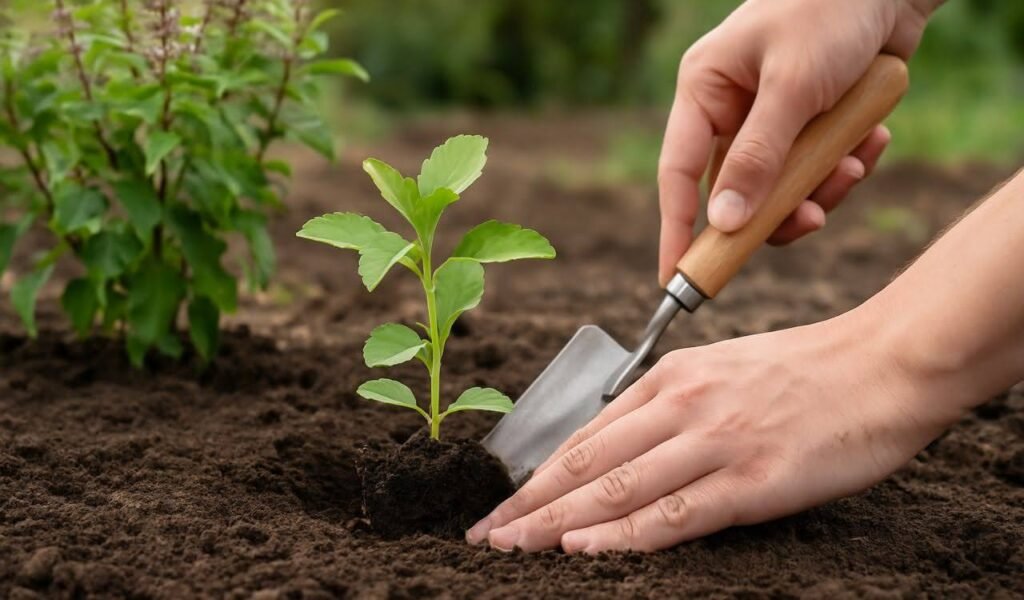
Planting your own tulsi basil plant is incredibly rewarding, and the process is simple when you know the basics.
Start With the Right Supplies
First things first: you’ll need either tulsi seeds or a young starter plant. Seeds offer a more affordable and traditional route, while starter plants can give you a little head start. You’ll also need a good quality, well-draining potting mix. A lightweight organic mix with some added compost or perlite works wonderfully. If you’re planting indoors, select a pot with good drainage holes to prevent root rot.
Sowing Seeds
If you’re planting from seeds, you can either sow them indoors 6–8 weeks before the last expected frost or wait until the weather outside has reliably warmed up. It’s a good idea to lightly soak the seeds in water for a few hours before planting, which can help speed up germination.
Scatter the seeds over the soil surface and cover them lightly with a very thin layer of soil. Holy basil seeds need light to germinate, so don’t bury them too deep. Keep the soil consistently moist but not soggy, and place the pot in a warm area. You should start seeing tiny sprouts within 1–2 weeks.
Transplanting and Spacing
Once your seedlings have grown a few inches tall and developed a couple of sets of true leaves, it’s time to transplant them into bigger pots or into your backyard garden. If you’re planting outdoors, space the plants about 12–18 inches apart to give them room to breathe and grow. Tulsi plants can reach 1–2 feet in height and spread nicely if given enough room.
Caring for Your Holy Basil Plant: Making It Thrive
Growing a holy basil plant is pretty straightforward, but a few good habits can really make a difference between a struggling plant and a flourishing one.
Watering Wisely
Water your tulsi basil plant regularly, but let the top inch of soil dry out between waterings. Overwatering is one of the few things that can really harm your plant. Make sure your pot or garden bed drains well. In the hottest parts of summer, you might need to water more often, but always check the soil first. Drooping leaves often signal thirst, while yellowing leaves can indicate too much water.
Feeding Your Plant
While holy basil isn’t a heavy feeder, giving it a light dose of organic fertilizer once a month during the growing season can really boost its vitality. A balanced fertilizer, or a compost tea, works beautifully. Avoid high-nitrogen fertilizers, which can make the plant grow fast but dilute the concentration of its medicinal compounds.
Pruning and Harvesting
One of the secrets to a lush, bushy tulsi plant is regular pruning. Just like when you trim a basil plant, start pinching back the growing tips. This encourages the plant to branch out and prevents it from becoming tall and leggy. You can harvest leaves at any time once the plant is well established, but try not to remove more than one-third of the plant at a time.
Common Problems When Planting Holy Basil (And How to Solve Them)
Even though tulsi basil plants are hardy, they’re not immune to occasional problems. Pests like aphids and whiteflies can sometimes be a nuisance, especially if you’re growing indoors. Neem oil spray or a simple mixture of water and a few drops of dish soap can often handle minor infestations naturally.
Root rot is another issue, usually caused by poor drainage or overwatering. Always ensure your soil dries out slightly between waterings and that your pots have proper drainage holes.
If you notice yellowing leaves, it could be a sign of stress from overwatering, poor soil quality, or too little light. Adjusting one or more of these factors usually brings the plant back to health quickly.
How to Use Your Sacred Basil Plant After Harvest

Once you have a healthy, thriving holy basil plant, you’ll want to put those beautiful leaves to good use! Tulsi leaves can be used fresh or dried. To dry them, simply lay them out in a single layer in a well-ventilated, shady spot and allow them to air dry for a few days. Once crispy, store them in an airtight container away from light and moisture.
One of the most popular uses for tulsi is brewing herbal tea. Just steep a few fresh or dried leaves in hot water for 5–10 minutes. The flavor is bright, spicy, and deeply soothing—perfect for boosting immunity, reducing stress, or simply relaxing at the end of the day.
You can also use tulsi in cooking, much like you would regular basil, although its stronger flavor means a little goes a long way. Some people make homemade tulsi tinctures or infuse the leaves into honey or oils for natural remedies.
FAQ
What is the holy basil plant used for?
The holy basil plant, also known as tulsi, is used for its medicinal, spiritual, and culinary benefits. It’s known to boost immunity, reduce stress, and aid digestion. People also use it in teas, tinctures, and Ayurvedic remedies.
Can I grow a holy basil plant indoors?
Yes! Holy basil grows well indoors with enough light. Place it near a sunny window that gets at least 6 hours of light daily, or use a grow light if needed.
How often should I water my holy basil plant?
Water when the top inch of soil feels dry. Avoid overwatering—holy basil likes moisture but hates soggy roots.
How long does it take for holy basil seeds to germinate?
Holy basil seeds usually germinate in 7 to 14 days if kept warm and moist. Make sure they get light during this phase for best results.
Can I use fresh tulsi leaves for tea?
Absolutely! Fresh holy basil leaves make a flavorful, healing tea. Just steep a few leaves in hot water for 5–10 minutes and enjoy.
Does holy basil need full sun?
Yes, the plant thrives in full sun—ideally 6 to 8 hours a day. It can survive in partial shade but may not grow as vigorously.
When is the best time to harvest holy basil leaves?
Start harvesting once the plant is 6–8 inches tall. Pick leaves in the morning when oils are strongest, and never take more than one-third of the plant at once.
Conclusion
Growing your own holy basil plant is like adding a living treasure to your home. From the simple joy of watching it thrive to the health benefits of its leaves, tulsi is a gift that keeps giving. Whether you’re planting holy basil in a sunny backyard patch or nurturing it on a sunny windowsill, you’ll find the experience deeply satisfying and enriching.
Now that you know everything about how to grow, care for, and enjoy your own tulsi basil plant, there’s no reason to wait. Start your sacred gardening journey today and experience the magic of holy basil firsthand!

